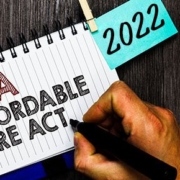Interaction between PPP Loans and the Employee Retention Credit (ERC)
- Find out how the Consolidated Appropriations Act, 2021 changed the interaction between PPP loans and the ERC.
- Learn how to collect the ERC if denied PPP loan forgiveness.
- Find out how amending Forms 941 could benefit your business.
- Discover how to claim the ERC if you previously qualified but never took it.
The Consolidated Appropriations Act, 2021 (CCA), passed by Congress and signed by the president late last December, included a very tax-beneficial provision. This provision liberalized the interaction between PPP loans and the Employee Retention Credit (ERC). Prior to its passage, if an employer obtained a PPP loan, the employer was ineligible to claim the ERC.
However, under the legislation, an employer that is eligible for the ERC can claim the ERC even if the employer has received a PPP loan. The following circumstances must apply:
- An eligible employer can claim the ERC on any qualified wages not counted as payroll costs in obtaining PPP loan forgiveness.
- Business owners can apply any wages that could count toward eligibility for the ERC or for PPP loan forgiveness to either of these two programs but not both.
Read on for more beneficial opportunities Fiducial thinks you should know about.

PPP Loan Forgiveness Denied
If an employer received a PPP loan and included wages they paid in the second and/or third quarter of 2020 as payroll costs in support of an application to obtain forgiveness of the loan (rather than claiming the ERC for those wages) and if the request for forgiveness was denied, then the employer can claim the ERC related to those qualified wages retroactively by amending their Forms 941 for 2020. This is done by using Form 941-X, Adjusted Employer’s Quarterly Federal Tax Return or Claim for Refund.
Business Qualified but Never Claimed the ERC
If a taxpayer did not obtain a PPP loan, qualified for the ERC in 2020, and did not previously take the payroll credit, they can still do so by filing Form 941-X. Taxpayers cannot use Form 7200, a form used to request advance payment of the credit, in this situation because you must file Form 7200 before filing the original 941 forms.
Congress designed the ERC as government-sponsored program to keep workers employed. They funded it by providing qualifying employers with a refundable credit against certain employment taxes. For 2020, the credit is a refundable payroll tax credit equal to 50% of qualified wages, up to maximum wages of $10,000 per employee. Thus, $5,000 is the maximum credit for qualified wages paid to any employee for 2020.
Example 1:
Eligible Employer pays $10,000 in qualified wages to Employee A in Q2 2020. The Employee Retention Credit available to Eligible Employer for the qualified wages paid to Employee A is $5,000.
Example 2:
Eligible Employer pays Employee B $8,000 in qualified wages in Q2 2020 and $8,000 in qualified wages in Q3 2020. The credit available to Eligible Employer for the qualified wages paid to Employee B is equal to $4,000 in Q2 and $1,000 in Q3 due to the overall limit of $10,000 on qualified wages per employee for all calendar quarters of 2020.
No credit is available for any period for which an employer is allowed a Work Opportunity Credit with respect to an employee.
Need to determine if your business might benefit from this law change or other employer-beneficial changes to the ERC that are effective for 2021 and aren’t covered in this article? Call Fiducial at 1-866-FIDUCIAL or make an appointment at one of our office locations to discuss your situation.
Ready to book an appointment now? Click here. Know someone who might need our services? We love referrals!
For more small business COVID-19 resources, visit Fiducial’s Coronavirus Update Center to find information on SBA loans, tax updates, the Paycheck Protection Program, paid sick and family leave, and more.









